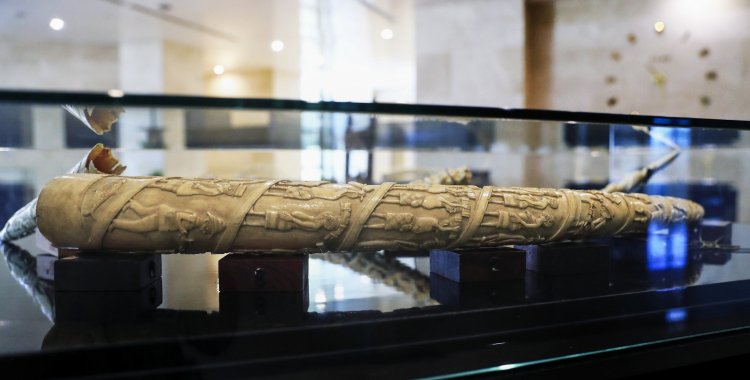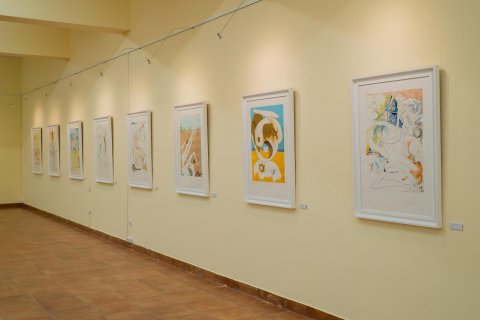Although not all the details of the journey of these artefacts are known, it is known that they were collected in the last century by a Portuguese missionary who lived for several years in the Cabinda region and took them with him when he returned to Portugal.
The objects accompanied the Salesian religious when he carried out a new mission in Spain, and the Spanish mothers who received the "inheritance" after his death began contacts with the Angolan authorities in Portugal to return the pieces, whose origin "they cannot define accurately, unless they come from Angola", according to the general director of the National Archives of Angola, Constança Ceita.
The exhibition on view at the National Archives of Angola until January 17th includes decorative and ritual pieces, personal adornments and musical instruments carved from ivory, a material that came to be considered the "white gold" of Angola and which, in addition to aesthetics and functionality, it also carries important symbolism, as she explained to Lusa.
"To this day, they are used by populations, not only as objects of adornment or furniture, but fundamentally in the context of African and Angolan cosmogony", highlighted the historian, highlighting that ivory also followed the transatlantic routes of the slave trade.
The academic also highlighted the relationship between African political leaders and Europeans through this material extracted from elephant tusks, which became part of symbols of Christianity, developing "deep affinities" through the crossing between European and African cultures.
"The strongest symbol are the crucifixes and protective saints that have become part of the veneration of the spirits of ancestors," she said.
The exhibition "O regresso do marfim: por uma política de recuperação das obras de arte em Angola", includes a few dozen objects from the 19th and 20th centuries that reveal to Angolans part of their history, portraying, for example, the life cycles of populations.
"It is extremely important because we have to provide society with knowledge of its assets, its culture", a unitary complex that comprises material and immaterial heritage, ways of acting and thinking.
For Constança Ceita, Angolan society needs to recognize and identify with its cultural assets, essential for valuing the country's identity history and "still living" cultures, as well as for historical, social, political and economic knowledge.
It is equally important to understand the process of relations between Angolans and Portuguese, which took place fundamentally in a context of exchange of cultural goods, she added.
The exhibition consists essentially of objects originating in the ancient states of Luhango, belonging to the large ethnolinguistic groups in the northern and northwestern regions of Angola, namely Ngoyo, Vili, Cacongo and Yombe.
Among these, pieces such as the Ngudi stand out, a type of trumpet used in enthronement rituals and puberty ceremonies, among others.
Others display, carved into elephant tusks, elements of daily life, Angolan fauna and flora, acts of veneration and worship of ancestors, interconnecting the sacred and the profane of the cosmogony of the Bantu, a vast African ethnolinguistic group from which many Angolan ethnicities originate.
Many were collected as part of "ethnographic campaigns" promoted by missionaries, as was the case here.
"The Salesian Jesuit missionaries had an arduous task in the context of collecting these cultural goods", considered Constança Ceita, remembering that during the great exploration trips to Central Africa, travelers, curious people, chroniclers, missionaries and traders interacted with ivory, even that the elephant was becoming a rare species.
African sovereigns exchanged or offered these precious pieces to the Europeans they came into contact with, attracted by the rarity and beauty of ivory, and the artifacts ended up circulating and crossing the Atlantic.
The expert highlights that the recovery of cultural assets "is a concern of the Angolan State" which has been triggering policies in this area.
"It has been a diplomatic effort between the States (...) in the context of negotiations so that these assets can be replaced, also following UNESCO's recommendations", she said.
The head of the National Archives of Angola said that there are pieces identified in Portugal, Spain and France, but they are still "not treated", as negotiation processes are underway with their holders, individuals and institutions, refusing to reveal more details.
"But people are very willing to give in, there are donations that are being made spontaneously, there has been a good policy at this stage", he assured, highlighting that he has not encountered obstacles on the Portuguese side, with negotiations "running at a good pace".







